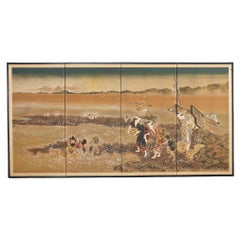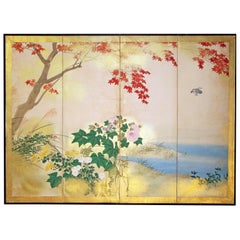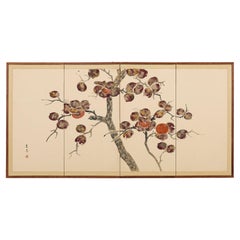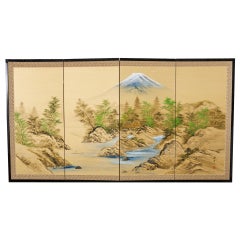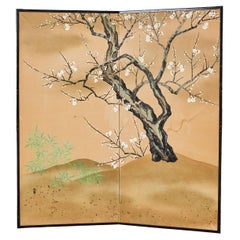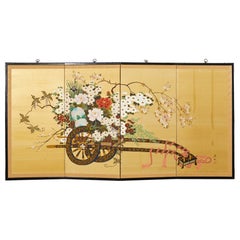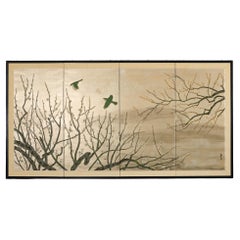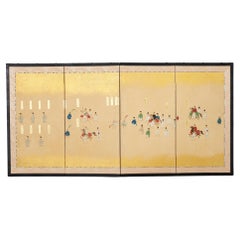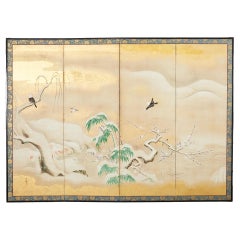Japanese Showa Screen
20th Century Japanese Showa Paintings and Screens
Brass
Mid-20th Century Japanese Showa Paintings and Screens
Paper
20th Century Japanese Showa Paintings and Screens
Silk, Wood, Paper
20th Century Japanese Showa Paintings and Screens
Brass
20th Century Japanese Showa Paintings and Screens
Brass
20th Century Japanese Showa Paintings and Screens
Brass
20th Century Japanese Showa Paintings and Screens
Brass
20th Century Japanese Showa Paintings and Screens
Brass
20th Century Japanese Showa Paintings and Screens
Brass, Gold Leaf
20th Century Japanese Showa Paintings and Screens
Wood, Paper
20th Century Japanese Showa Paintings and Screens
Silk, Wood, Paper
20th Century Japanese Showa Paintings and Screens
Brass
20th Century Japanese Showa Paintings and Screens
Brass
20th Century Japanese Showa Paintings and Screens
Brass
20th Century Japanese Showa Paintings and Screens
Brass
20th Century Japanese Showa Paintings and Screens
Gold Leaf
20th Century Japanese Showa Paintings and Screens
Silk, Wood, Paper
20th Century Japanese Showa Paintings and Screens
Gold Leaf
Mid-20th Century Japanese Showa Paintings and Screens
Silk, Paper
20th Century Asian Showa Paintings and Screens
Wood, Paper
20th Century Japanese Mid-Century Modern Paintings and Screens
Silk, Wood, Paper
Mid-20th Century Japanese Showa Paintings and Screens
Gold Leaf
20th Century Japanese Showa Paintings and Screens
Gold Leaf
Vintage 1920s Japanese Japonisme Paintings and Screens
Wood
20th Century Japanese Showa Paintings and Screens
Silk, Plexiglass, Paper, Wood
Early 20th Century Japanese Showa Paintings and Screens
Silk
Late 20th Century Japanese Showa Paintings and Screens
Paper
20th Century Japanese Showa Paintings and Screens
Fabric
Mid-20th Century Japanese Showa Paintings and Screens
Silk
20th Century Japanese Showa Paintings and Screens
Silk
Vintage 1930s Japanese Showa Paintings and Screens
Silk
20th Century Japanese Showa Paintings and Screens
Fabric
Mid-20th Century Japanese Showa Paintings and Screens
Wood, Paper
Vintage 1970s Japanese Showa Paintings and Screens
Silk, Wood, Paper
20th Century Japanese Showa Paintings and Screens
Silk
Vintage 1930s Japanese Showa Paintings and Screens
Silk, Paper
20th Century Japanese Showa Paintings and Screens
Silk
20th Century Japanese Showa Paintings and Screens
Silk
20th Century Japanese Showa Paintings and Screens
Brass
20th Century Japanese Showa Paintings and Screens
Silk
Mid-20th Century Japanese Showa Paintings and Screens
Wood, Paper
20th Century Japanese Showa Paintings and Screens
Paper
Vintage 1930s Japanese Showa Paintings and Screens
Wood, Paper
20th Century Japanese Showa Paintings and Screens
Silk
20th Century Japanese Showa Paintings and Screens
Silk
Mid-20th Century Japanese Showa Paintings and Screens
Gold Leaf
Vintage 1930s Japanese Showa Paintings and Screens
Gold Leaf, Silver Leaf
20th Century Japanese Showa Paintings and Screens
Wood, Paper
20th Century Japanese Showa Paintings and Screens
Wood, Paper
Mid-20th Century Japanese Showa Paintings and Screens
Silk, Wood
Early 20th Century Japanese Showa Paintings and Screens
Bronze
Early 20th Century Japanese Showa Paintings and Screens
Silk, Wood, Paper
Early 20th Century Japanese Showa Paintings and Screens
Bamboo, Wood
Mid-20th Century Japanese Showa Paintings and Screens
Wood, Paper
20th Century Japanese Taisho Paintings and Screens
Silk
20th Century Japanese Taisho Paintings and Screens
Silk
Mid-20th Century Japanese Showa Paintings and Screens
Silk, Wood, Paper
- 1
Japanese Showa Screen For Sale on 1stDibs
How Much is a Japanese Showa Screen?
Finding the Right Paintings-screens for You
Traditional Asian paintings were often created on scrolls and folding screens. Artisans made screens that could be folded up or spread out by connecting several panels using hinges. Today, antique Asian folding screens and paintings are sophisticated decorative accents that can serve as makeshift partitions to ensure privacy.
The original folding screens were created by Chinese artists. The earliest record of screens comes from the 2nd century B.C., and surviving examples date back to the Ming dynasty. Chinese painting utilizes many of the same tools as calligraphy — these screens were crafted from wood with painted panels featuring striking art or calligraphy that told cultural stories or represented nature and life in the area.
The practice was introduced to Japan, where paintings for screens were made on paper and silk, in the 8th century. These paintings frequently feature subjects such as landscapes, animals, flowers and Buddhist religious themes. Along with screens for tea ceremonies and dance backgrounds, there were screens for use in Shinto and Buddhist temples.
In the 17th century, screens began to be imported to Europe where their popularity grew. Coco Chanel famously collected Coromandel folding screens.
Traditional Asian paintings can make a tasteful addition to any wall, and screens can be used as decoration or, in the case of larger iterations, as an aesthetic way to divide a large room. Browse the selection of antique Asian paintings and screens from a variety of styles and eras on 1stDibs.
- 1stDibs ExpertApril 5, 2022Japanese screen painting is the art of creating byōbu, or Japanese screens. Byōbu vary in subject matter and style. The screens are free-standing, portable and decorated with symbolic images or calligraphy. It is common to find byōbu in pairs with at least two panels. Shop a selection of byōbu on 1stDibs.
- 1stDibs ExpertAugust 17, 2021Japanese screens are called Byōbu and are made from many panels with beautiful calligraphy and paintings. These folding screens can be a decorative and interesting way to separate rooms in a living space. Find a collection of Japanese screens for sale on 1stDibs.
 Lotus GalleryMarch 17, 2021A Japanese low screen was traditionally used while seated upon the floor. The low screen would block wind and drafts, provide limited privacy, and are often decorated with seasonal themes.
Lotus GalleryMarch 17, 2021A Japanese low screen was traditionally used while seated upon the floor. The low screen would block wind and drafts, provide limited privacy, and are often decorated with seasonal themes.
